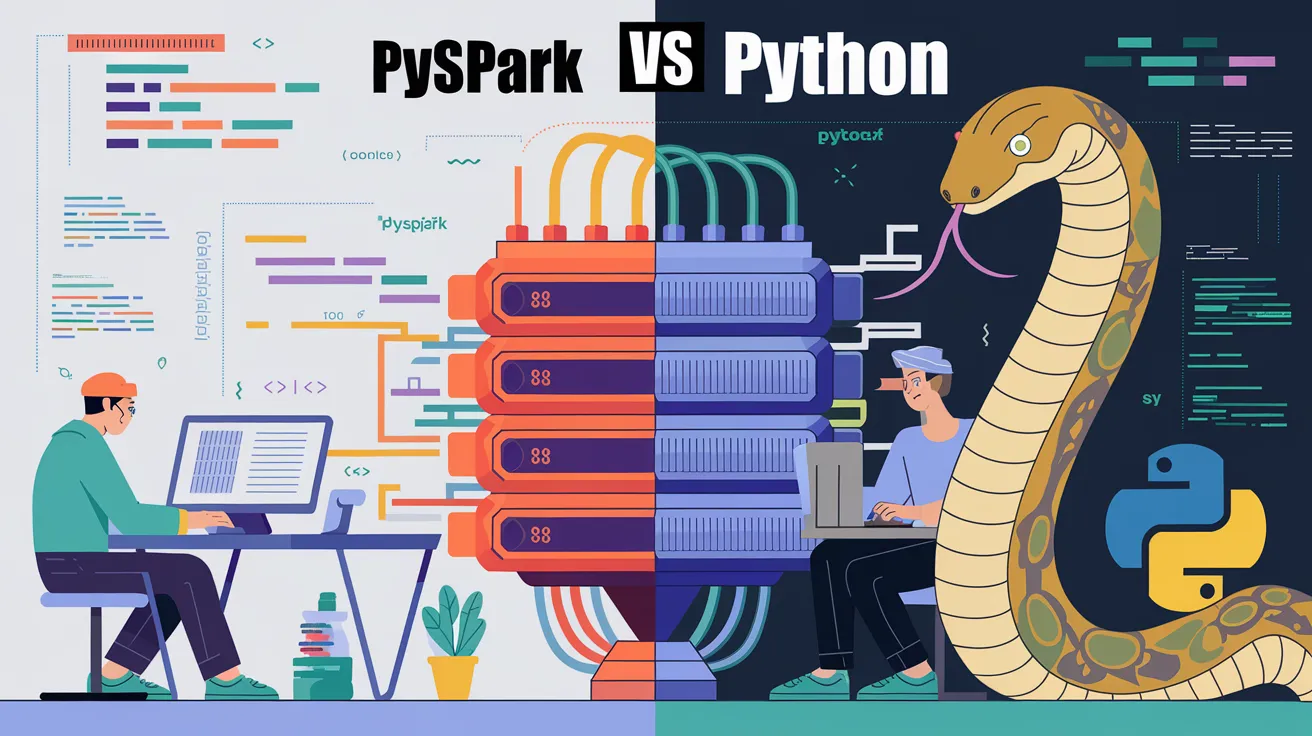There are no items in your cart
Add More
Add More
| Item Details | Price | ||
|---|---|---|---|
Python has become one of the most popular programming languages due to its simplicity, readability, and extensive libraries. It is widely used for tasks such as data analysis, automation, machine learning, and web development. However, when it comes to handling big data, Python alone may not be efficient. This is where PySpark, the Python API for Apache Spark, comes into play.
PySpark allows users to leverage distributed computing and efficiently process vast amounts of data across multiple nodes. But how does PySpark differ from traditional Python, and when should you use one over the other? This blog provides an in-depth comparison of PySpark and Python, analyzing performance, scalability, memory management, and use cases to help you choose the best tool for your needs.

A Versatile, High-Level Programming Language
Python is a high-level, general-purpose programming language that is widely known for its simple syntax and versatility. It is commonly used in various fields, including:
Python's easy-to-read syntax and large community support make it ideal for both beginners and experienced developers.
A Distributed Computing Framework for Big Data Processing
PySpark is the Python API for Apache Spark, a distributed computing framework designed for processing large datasets. Apache Spark's architecture allows users to perform high-speed computations on datasets that would be too large for traditional Python scripts.
Key features of PySpark include:
PySpark is commonly used in industries like finance, healthcare, and e-commerce, where processing large amounts of real-time data is crucial.
One of the most significant differences between PySpark and Python is execution speed. Python is an interpreted language, meaning it runs line by line, which can slow down performance when handling large datasets.
# Using Python (Pandas) for data processing
import pandas as pd
df = pd.read_csv("large_file.csv")
df["new_col"] = df["existing_col"].apply(lambda x: x * 2) # Slow for large datasets
# Using PySpark for data processing
from pyspark.sql import SparkSession
spark = SparkSession.builder.appName("example").getOrCreate()
df = spark.read.csv("large_file.csv", header=True, inferSchema=True)
df = df.withColumn("new_col", df["existing_col"] * 2) # Faster with large datasetsWith PySpark, computations are executed in parallel, making it ideal for processing terabytes of data efficiently.
Python's data processing capabilities are limited to a single machine, making it challenging to scale. PySpark, on the other hand, is built for horizontal scalability, distributing workloads across multiple machines in a cluster.
3. Data Processing Capabilities
Python uses Pandas and NumPy for data analysis, which works well for smaller datasets but struggles with big data. PySpark, on the other hand, leverages RDDs and DataFrames, making it more efficient for distributed data processing.A direct comparison:
Choosing between PySpark and Python depends on the scale, complexity, and requirements of your project. Below is a comparison to help you decide when to use each:
| Scenario | Use Python | Use PySpark |
|---|---|---|
| Small-scale data analysis | ✅ | ❌ |
| Big data processing | ❌ | ✅ |
| Machine learning & AI | ✅ | ✅ |
| Real-time analytics | ❌ | ✅ |
| Web development | ✅ | ❌ |
| Cloud-based big data applications | ❌ | ✅ |
| Single-node execution | ✅ | ❌ |
| Distributed computing | ❌ | ✅ |
| ETL & Data Pipelines | ❌ | ✅ |
If you're working with small datasets and require quick prototyping, Python is the right choice. However, if you're dealing with large-scale big data applications, distributed computing, or cloud-based environments, PySpark is the better option.
Both Python and PySpark have their strengths, and the choice depends on the scale and complexity of your project.
| Feature | Python | PySpark |
|---|---|---|
| Performance | Slower on big data | Faster with distributed computing |
| Scalability | Limited to one machine | Scales across multiple nodes |
| Memory Management | Manual optimization required | Optimized for distributed computing |
| Ease of Use | Beginner-friendly | Requires knowledge of distributed systems |
| Best Use Case | Small datasets, ML, AI | Big data processing, cloud computing |
If you're dealing with small to medium datasets, Python is the ideal choice. However, for large-scale distributed computing, PySpark is the way to go. Mastering both can significantly enhance your ability to work with different types of data processing workloads.
Happy coding! 🚀